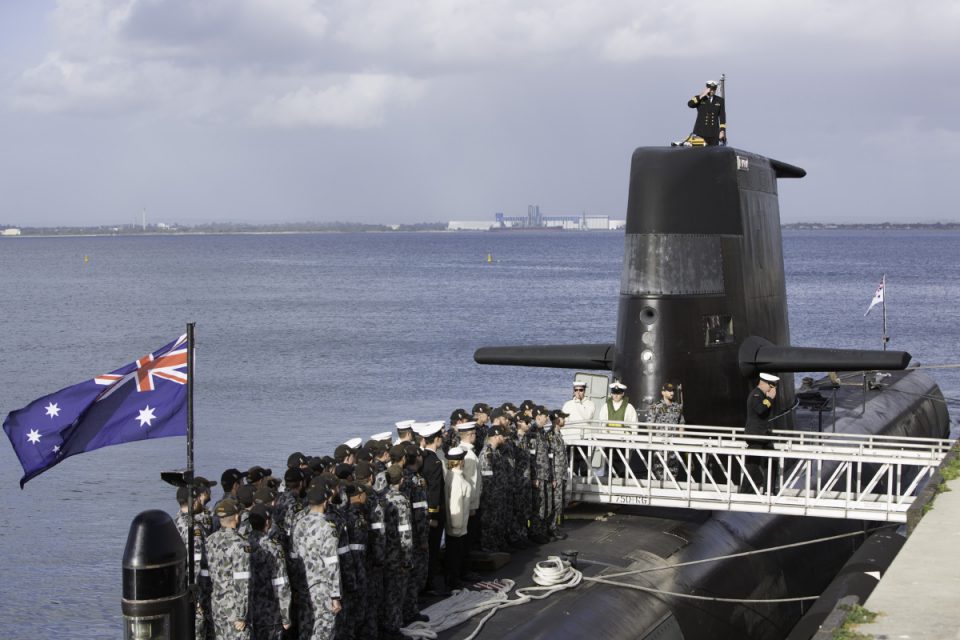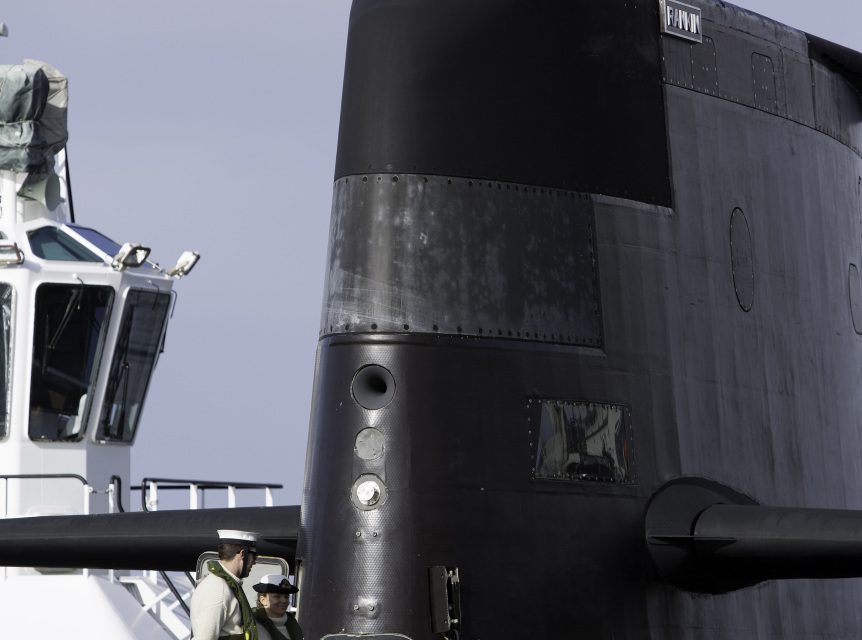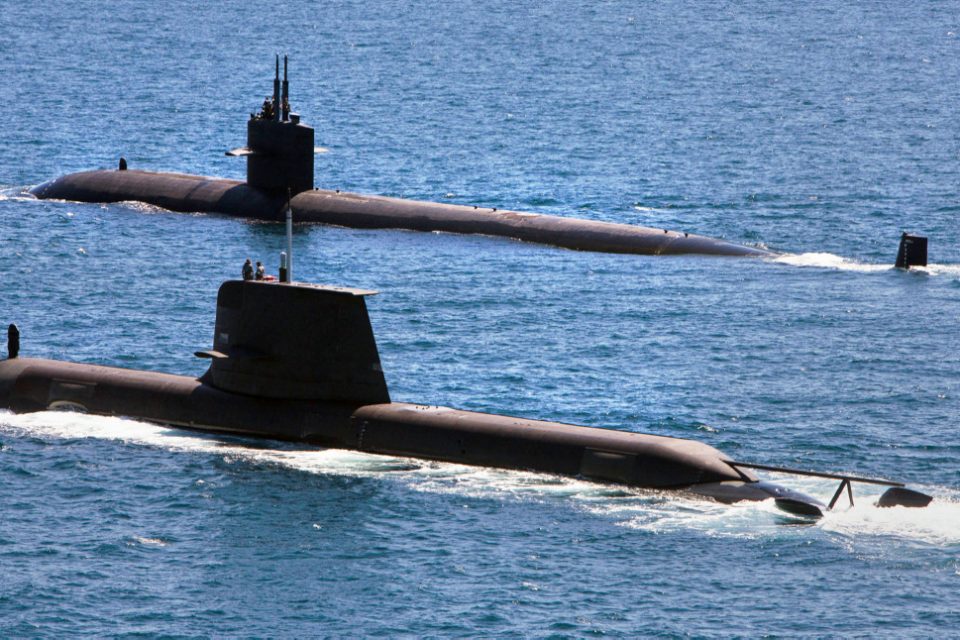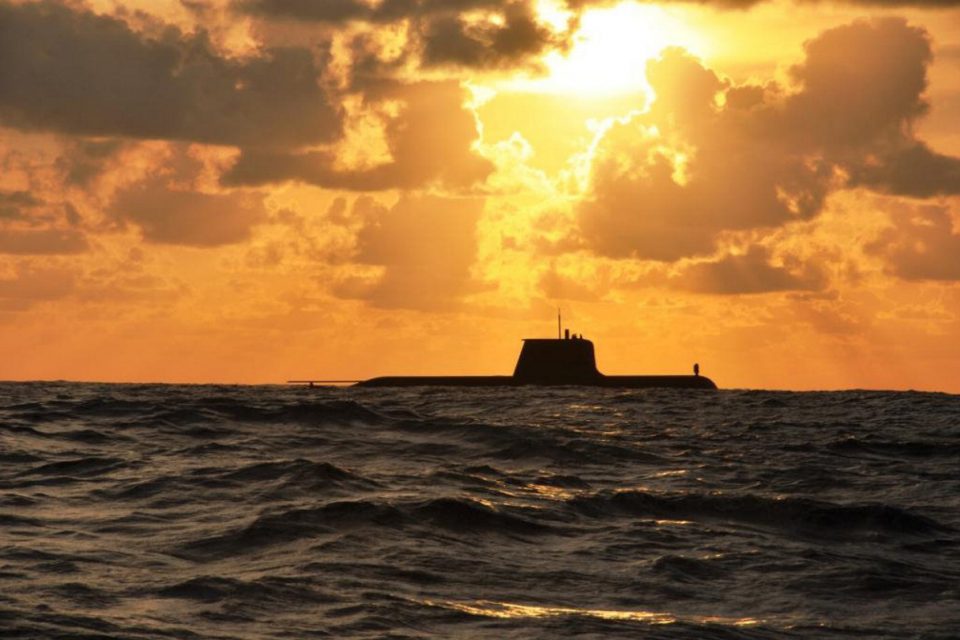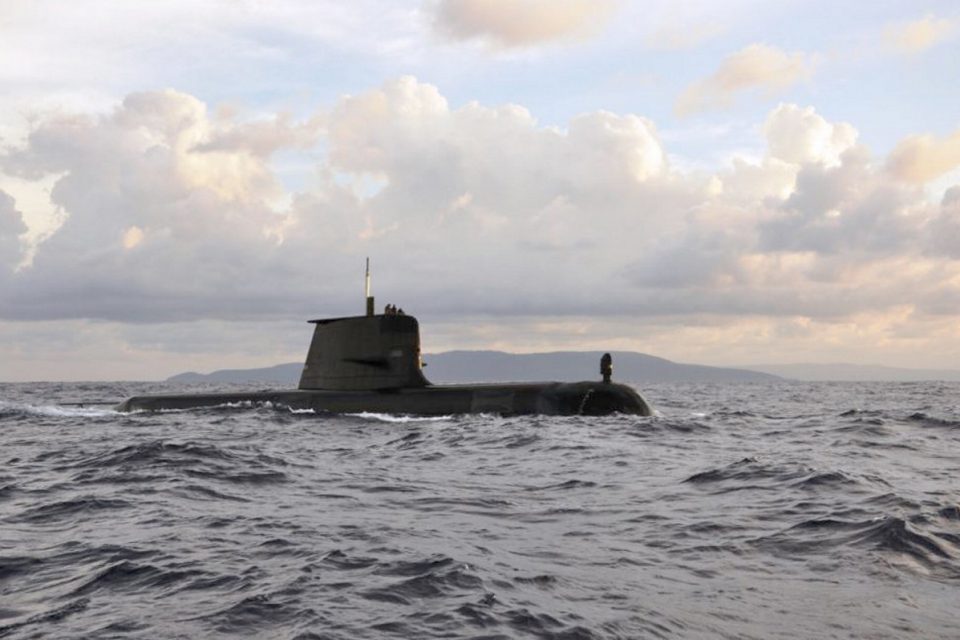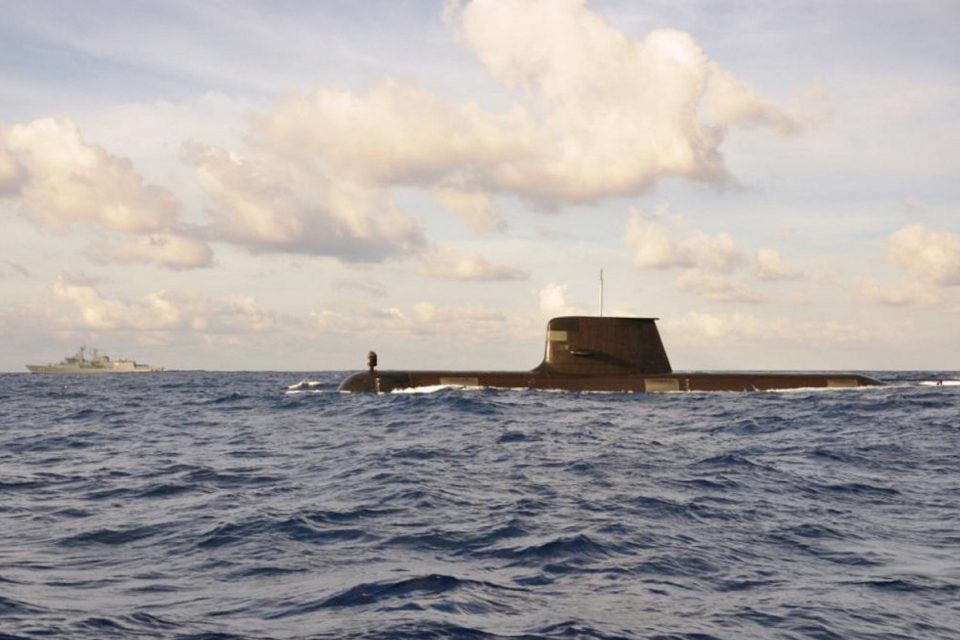2017-05-02 By Robbin Laird
During my most recent trip to Australia, the focus was upon how to shape an integrated ADF moving forward.
During my interviews surrounding the Williams Foundation seminar on that theme, I have had the chance to talk to key decision makers in shaping a way ahead.
Last August, I had a chance to talk with the Chief of the Australian Navy, Vice Admiral Tim Barrett.
A key speaker at the Williams Foundation seminar on air-land integration was the Chief of the Australian Navy, Vice Admiral Tim Barrett.
Barrett’s speech focused on the opportunities and challenges of the largest recapitalisation of the Australian Navy since World War II.
New submarines, destroyers and amphibious ships and associated fleet assets are being built in Australia to shape a new maritime capability for Australia.
But this force is being built in the time of significant innovation in the Pacific whereby new force concepts are being shaped, such as kill webs, distributed lethality, and fifth generation airpower.
Barrett made it very clear that what was crucial for the Navy was to design from the ground up any new ships to be core participants in the force transformation process underway.
We picked up where we left off from our August meeting.
Question: How do fight with the fleet you have and prepare at the same time for tomorrow’s fleet, especially when you have several new programs in the pipeline?
Vice Admiral Tim Barrett: You have to fight with the fleet you have now.
That is not an option; it is a necessity.
My focus to do that better and to lay the groundwork for the future fleet is to focus upon availability of assets.
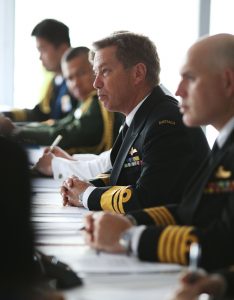 Chief of Navy, Vice Admiral Tim Barrett, AO, CSC, RAN holds the floor, during the Indian Ocean Naval Symposium (IONS) Conclave of Chiefs. Australia currently holds the Chairmanship of IONS. The regional forum was held during Sea Power 2015. *
Chief of Navy, Vice Admiral Tim Barrett, AO, CSC, RAN holds the floor, during the Indian Ocean Naval Symposium (IONS) Conclave of Chiefs. Australia currently holds the Chairmanship of IONS. The regional forum was held during Sea Power 2015. *
How to we get our availability rates higher?
How do we get ships to sea more effectively and more often?
They are not going to make much difference sitting in drydocks.
One can provide for enhanced deterrence through enhanced availability.
Question: You certainly don’t win with Power Point slides, do you?
Vice Admiral Tim Barrett: You certainly don’t nor with a connected force in those slides, represented by lightening bolts but not realized in practice.
For example, we have a small submarine fleet of six submarines; they are not going deter anybody if they are not available and capable of going to see.
As we discussed last time, we have put a major effort in getting much greater availability from our Collins class submarines, and the ways we have done so will shape our approach, our expectations and our template for the operation of the new class of submarines.
We have seen a dramatic improvement in our Collins Class boats.
Question: In other words, by learning how to ramp up availability with today’s fleet you are preparing the template for future operations?
Vice Admiral Tim Barrett: That is clearly our approach going forward.
We should be building our sense of availability in the design right now, so that when the future frigates arrive in place, we have maximized availability, and through that deterrence given their contribution to a distributed lethal force capability.
And this clearly is a key challenge for the workforce to shape enhanced availability.
We are reworking our work force to do so today, but must prepare for the transition in the workforce to do so in the future, recognizing that tomorrow’s platforms will be different, and different skill sets required ensuring enhanced availability.
Government has committed to a future navy in terms of key new platforms.
I have that as a target goal so can work from here to there rather than simply fighting for the need to have a future fleet.
This certainty is crucial in allowing me to work the transition.
As we shape task force concepts for the current fleet, we are working connectors to make the fleet more effective in our task force approach.
As we work those connectors we are also anticipating how to build those into the design of the new fleet, rather than having to work the problem after we have acquired the platforms.
Question: And this is not simply about Navy, you focus is broader?
Vice Admiral Tim Barrett: It is; it is about working with industry; it is about working with the ADF; it is about working with government; in essence it is about the commitment of the nation.
We are a small force; smaller than the New South Wales Police Force.
We can not do this without a national commitment.
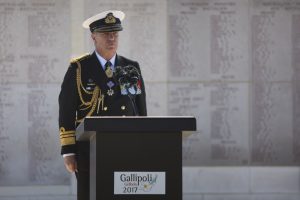 Chief of Navy, Vice Admiral Tim Barrett, AO, CSC, RAN, delivers the Ode of Remembrance at the Lone Pine commemorative service in Gallipoli.
Chief of Navy, Vice Admiral Tim Barrett, AO, CSC, RAN, delivers the Ode of Remembrance at the Lone Pine commemorative service in Gallipoli.
Question: One aspect of change clearly is building 21st century defense structure.
I have just returned from the UK and witnessed their significant efforts at Lossiemouth, Waddington, Marham and at Lakenheath to have a new infrastructure built.
And certainly have seen that at RAAF Williamtown with the F-35 and at RAAF Edinburgh with the P-8/Triton.
How important in your view is building a new infrastructure to support a 21st century combat force?
Vice Admiral Tim Barrett: Crucial.
And that is in part what I am referring to as an industrial and national set of commitments to shaping a 21st century combat fleet.
We spoke last time about the Ship Zero concept.
This is how we are focusing upon shaping a 21st century support structure for the combat fleet.
I want the Systems Program Office, the Group that manages the ship, as well as the contracted services to work together on site.
I want the trainers there, as well, so that when we’re maintaining one part of the system at sea, it’s the same people in the same building maintaining those things that will allow us to make future decisions about obsolescence or training requirements, or to just manage today’s fleet.
I want these people sitting next to each other and learning together.
It’s a mindset.
It puts as much more effort into infrastructure design as it does into combat readiness, which is about numbers today.
You want to shape infrastructure that is all about availability of assets you need for mission success, and not just readiness in a numerical sense.
Getting the right infrastructure to generate fleet innovation on a sustained basis is what is crucial for mission success.
And when I speak of a continuous build process this is what I mean.
We will build new frigates in a new yard but it is not a fire and forget missile.
We need a sustained enterprise that will innovate through the life of those frigates operating in an integrated ADF force.
That is what I am looking for us to shape going forward.
Question: An example of your approach to the future is clearly the new submarine.
A French design house and an American combat systems company will be working together really for the first time.
And they are building a submarine which has never been built before.
This provides an opportunity for you to shape a new support structure along the lines you have described going forward.
How do you see this process?
Vice Admiral Tim Barrett: It is something new and allows us to shape the outcome we want in terms of an upgradeable sustainable submarine with high availability rates built in. We intend to see this built that way from the ground up.
It is not simply about acquiring a platform.
We will not be a recipient of someone else’s design and thought.
This will be something that we do, and we will work with those that have a capacity to deliver what we say we need.
I think the way you characterize the process makes sense.
The experiences we’ve had through Collins have taught us a lot.
With 12 of these future submarines in a theater anti-submarine role we think we can make an effective contribution to our defense and to working with core allies in the region, notably the US Navy.
Editor’s Note: Vice Admiral Barrett has published a new book this year entitled The Navy and the Nation and Ed Timperlake recently commented on this book as follows:
The Aussies are not just buying new equipment; they are rethinking how to integrated that force and make a more effective and lethal combat capability.
A recent publication by the Australian Chief of Navy illustrates the point.
Australia’s Vice Admiral Tim Barrett has written a brilliant book about maritime power.
It is what is known as a “good read” because it is written with great insights presented in easily understandable prose.
He shows the reader why “The Navy and the Nation” is a sacred bond.
This passage is one of the most powerful ever written about the role of a Navy and the connection with their citizens:
“Most People think the Navy is something else.
“They know it exists, the may even have a rough idea of what it is for, but they don’t think it’s got much to do with them.
“They’re wrong.
“The Navy is a national enterprise in which everyone is involved and which everyone is involved and which delivers peace and security to everyone in the country.
“This enterprise is a two-way street, and must be a two-way street.
“Going one way, the Navy offers peace and security. Going the other, the people offer support and contribution. Only when the street is a properly mutual two-way exchange between the Navy and the citizens can this bargain, this contract, deliver what it needs to.”
The slideshow above highlights the Collins class submarines and the photos are credited to the Australian Department of Defence.
The video below highlights the recent ceremony in Europe honoring those who fought at Gallipoli and the Chief of Navy delivered a powerful address at that ceremony,.


